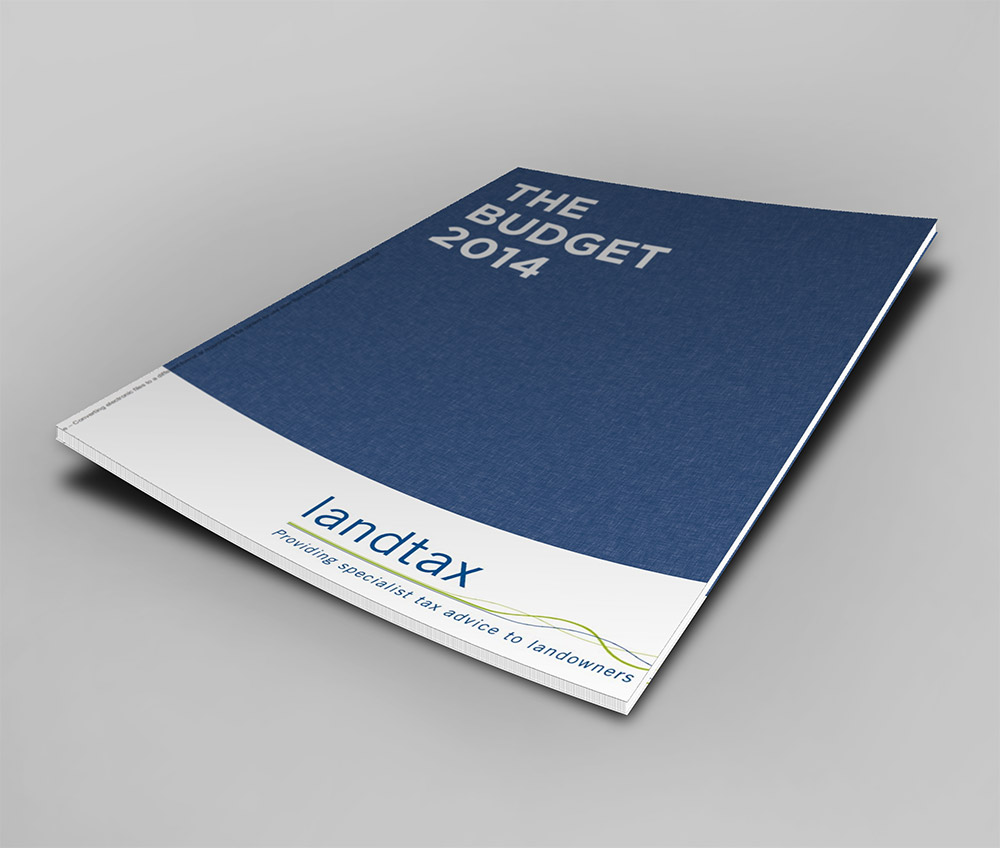
01 Mar 2014 Budget 2014 – main issues for farmers and landed clients
Click here to download our summary of the Chancellor’s 2014 Budget.
The following are the main issues arising from the Chancellor’s 2014 Budget for farmers and landed clients:
1 Annual Investment Allowance
The Annual investment allowance (AIA) available to most businesses on qualifying capital expenditure has been increased from £250,000 to £500,000 from April 2014 for an extended temporary period to 31.12.2015 (originally 31.12.2014)
The actual impact of this increase upon individual businesses will depend upon their year ends and when the qualifying expenditure arose, as for expenditure before April 2014 the maximum AIA will remain £250,000
For example, an arable business with a 30 September 2014 year end, the overall limit will be a maximum of £250,000 x ½ + £500,000 x ½ = £375,000, although the actual maximum amount will depend upon when the expenditure arises and as noted above, for expenditure before April 2014 the maximum AIA will remain £250,000
2 Annual Tax on Enveloped Dwellings (ATED) changes
Although the Chancellor referred to Stamp Duty Land Tax applying to residential property purchases in his speech, the more detailed press release notes also reveal changes to the Annual Tax on Enveloped Dwellings (ATED), to extend this to properties valued at over £1 million from April 2015 and £500,000 from April 2016, whereas it currently only applies to properties valued at over £2 million
The charge applies to residential properties owned by non-natural persons, which as well as companies includes partnerships where a company is a partner
There are exemptions which apply, for example to let properties and farmhouses (a term in the legislation on which HMRC have provided further (non-statutory) guidance), which is likely to mean that there will be more paperwork to complete on an annual basis to certify that the properties qualify for the reliefs, assuming that they meet the qualifying conditions
In particular, for farmhouse relief to apply:
- the farmhouse must form part of the land occupied for farming (ie physically contiguous)
- the person carrying on the farming trade must have an interest in the farmhouse (through their interest in the partnership)
- the farmhouse must be occupied by a farm worker who occupies it for the purposes of the farming trade (or a retired worker/spouse)
- the farm worker must have a substantial involvement in the day-to-day work of the trade and/or the direction and control of the farming trade, where substantial involvement is not defined, but HMRC interpret substantial involvement as meaning more than 20 hours per week on average throughout the year
If a relief is not available, then residential properties worth between £1 million and £2 million will be taxable from 1 April 2015 with an annual charge of £7,000. Properties worth between £500,000 and £1 million will be taxable from 1 April 2016 with a charge of £3,500
3 Stamp Duty Land Tax (SDLT) changes
The rate of SDLT on the purchase of residential properties increases to 15% from 19 March for acquisitions by non-natural persons, which as noted above includes companies and partnerships where a company is a partner
This is probably not a concern for most partnerships where a company is a partner, as the residential property is usually acquired with farmland, so the residential rate of SDLT will not apply, but may affect the acquisition of additional stand alone accommodation for farm workers
4 New Individual Savings Accounts (NISA)
From 1 July 2014 the Individual Savings Account limit will be increased to £15,000 and the restrictions on the transfer of funds between stocks and shares and cash accounts will be removed
5 Extension of rollover relief to the new Basic Payment entitlements
Capital Gains Tax rollover relief is being extended to include the new Basic Payment entitlements. This will benefit farmers, including companies carrying on a farming business, who dispose of or acquire payment entitlements under the new agricultural subsidy Basic Payment Scheme
6 The VAT taxable turnover threshold which determines whether a person must be registered for VAT, increases from £79,000 to £81,000 from 1 April
The following measures will be introduced from April 2014, having been previously announced:
- The personal allowance for most individuals increases to £10,000 from 6 April 2014 (currently £9,440), the Capital Gains Tax annual exemption increases to £11,000 (currently £10,900) and the Inheritance Tax nil rate band remains £325,000
- The Capital Gains Tax private residence relief for the final period of ownership, regardless of residence, is reduced to 18 months from 6 April 2014 (previously three years)
- Anti-avoidance legislation has been introduced aimed at perceived abuses of partnership structures, which will most affect farming business where HMRC consider that there have been tax-motivated allocations of business profits or losses in partnerships (not just LLPs) where the partners include both individuals and companies (mixed membership partnerships)
There will be further consultation on the proposals for simplifying the calculation of the Inheritance Tax trust charges and dividing the nil-rate band available to trusts created by the same settlor, with legislation to be introduced in the Finance Bill 2015.


